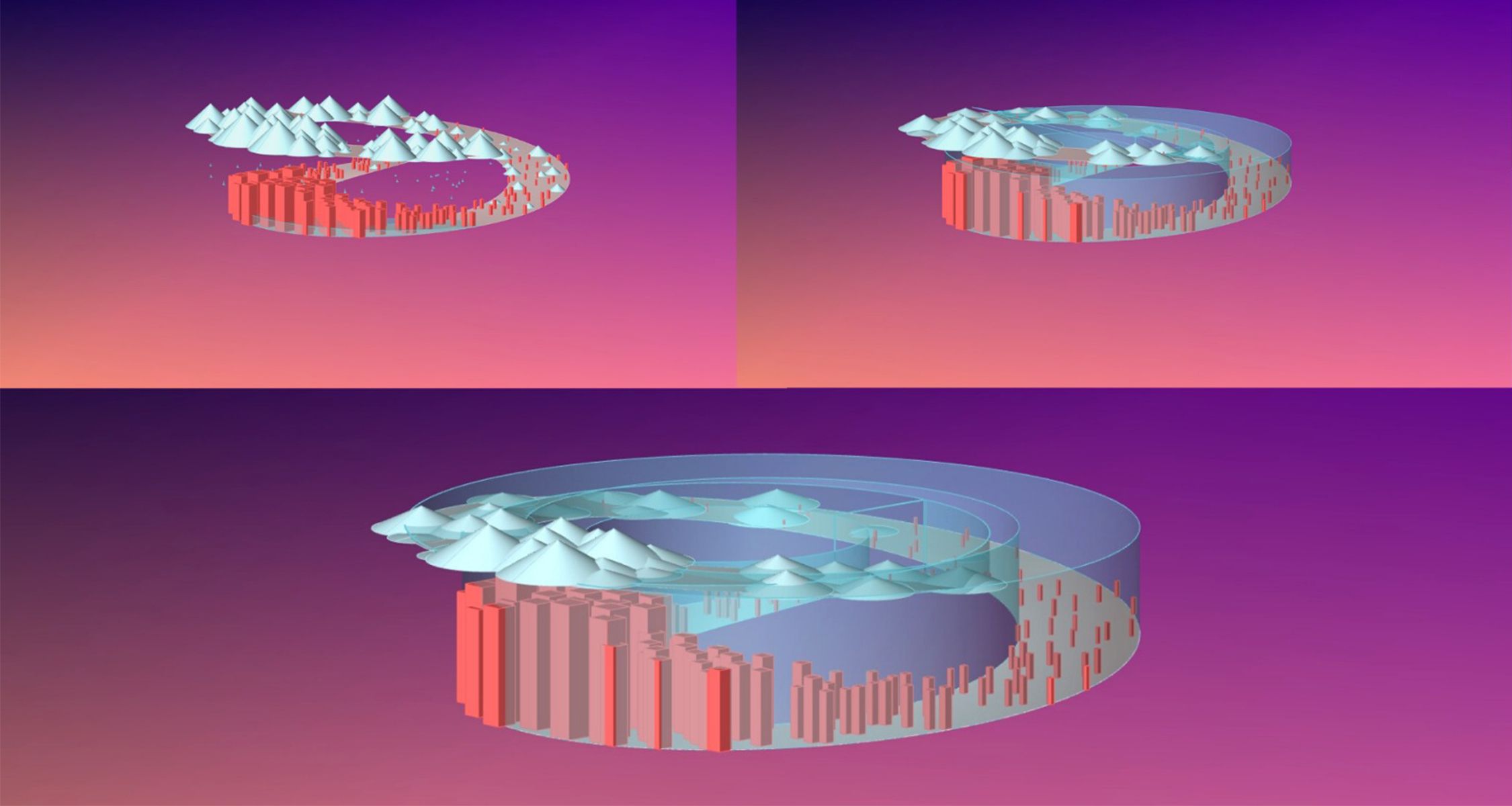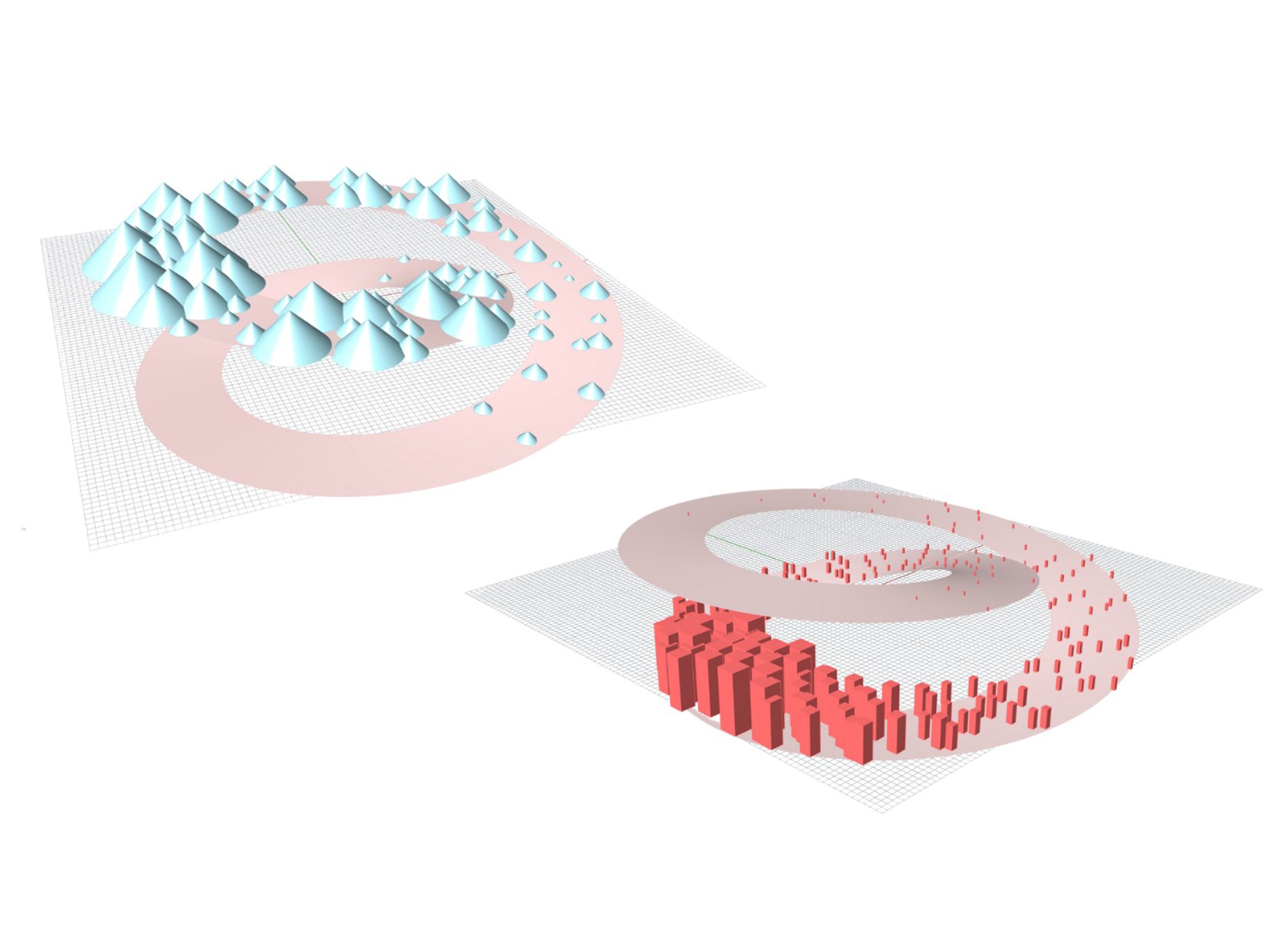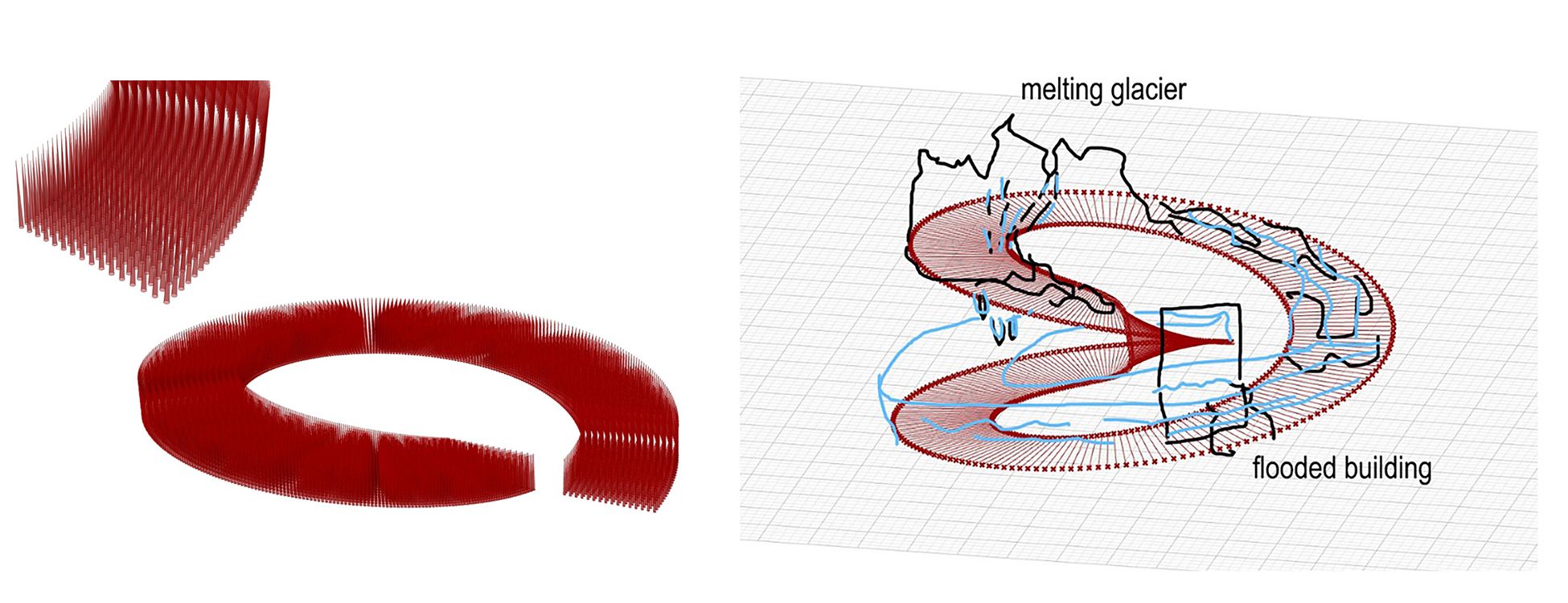A Melting Permanence
Climate Change within a Cyclical Relationship

A melting permanence is the attempt to illustrate a major consequence of climate change - sea level rise - as a collection of geometric surfaces interacting with each other.
Global greenhouse gas emissions play a major role in accelerating global warming. As temperatures rise, glaciers melt. Turning into water, they flow down through valleys and cities and eventually make the sea level rise and endanger big cities on low-lying shore lines. Glaciers - the former epitomes of permanence - become transient as they turn into something fluid; so do ironically the very concrete buildings that partially caused the glaciers to melt as they get washed away.
Our illustration is an arrangement of the natural and man-made environments along a spiral-like surface. The surface's continuity emphasizes the interconnection between the two. The arrangement of buildings and glaciers works a probability distribution where buildings populate the bottom of the spiral and glaciers populate the top. The buildings’ height increases with lower altitude and the glaciers grow higher toward the top of it.
Eventually, drops of melting ice fall down from the edge of the spiral towards the buildings adding up to one flat surface illustrating the sea level. The more drops of water fall down, the higher the sea level gets and the more buildings get flooded.

